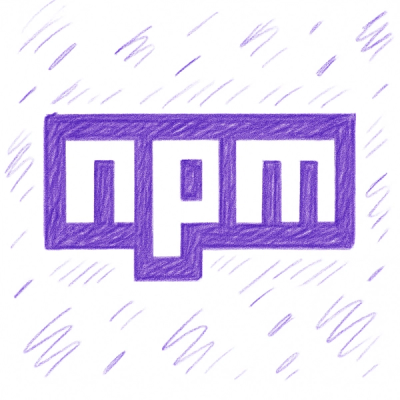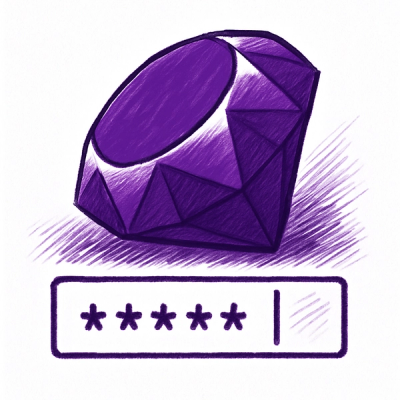
Security News
npm Adopts OIDC for Trusted Publishing in CI/CD Workflows
npm now supports Trusted Publishing with OIDC, enabling secure package publishing directly from CI/CD workflows without relying on long-lived tokens.
github.com/jbrukh/goavatar
Local component that interfaces with external devices and the Octopus website.
bin/ scripts for installing and testing
cmd/
obf/ the Octopus Binary Format viewer (see: obf --help)
octopus/ the Octopus Connector websocket server (see: octopus --help)
printer/ print device streams in the console (see: printer --help)
datastruct/ data structures used in the application layer
device/ application layer generic device
drivers/ devices we currently support
avatar/ the AvatarEEG
mock_avatar/ a fake AvatarEEG for testing
thinkgear/ devices with NeuroSky ThinkGear protocol
etc/ tools for testing
formats/ codecs and file recorders for OBF
socket/ the octopus socket and protocol
util/ generic utilities
var/ empty directory for testing files
Use Go 1.1 (or later). Make sure your $GOPATH is set. Make sure $GOPATH/bin is on your PATH. To get the repo:
$ go get -u -v github.com/jbrukh/goavatar/...
This installs the repo into $GOPATH/src/github.com/jbrukh/goavatar. If you are not finding dependencies, then try go-getting them:
$ go get <package>
To compile, test, and install everything:
$ bin/release.sh
To recompile certain builds you sometimes need to do:
$ go clean -i && bin/release.sh
Commands that take command-line parameters will usually take:
-device="avatar": one of {'avatar', 'mock_avatar', 'thinkgear'}
-mockChannels=2: the number of channels to mock in the mock device
-mockDevice=false: whether to use the mock device
-mockFile="etc/1fabece1-7a57-96ab-3de9-71da8446c52c": OBF file to play back in the mock device
-port="/dev/tty.AvatarEEG03009-SPPDev": the serial port for the device
-repo="var": directory where recordings are stored
The option --mockDevice is short for --device="mock_avatar". Usually the NeuroSky MindBand lives on port /dev/tty.BrainBand-DevB, so you would run like this:
$ octopus --device=thinkgear --port="/dev/tty.BrainBand-DevB"
To simulate multiple channels when using the MockAvatarEEG, do:
$ octopus --mockDevice --mockChannels=8
//---------------------------------------------------------//
// Messages
//---------------------------------------------------------//
type (
// Base type for messages.
Message struct {
Id string `json:"id"` // should be non-empty
MessageType string `json:"message_type"` // will be one of {"info", connect", "record", "upload", "error"}
}
// Basic information about the server.
InfoMessage struct {
Id string `json:"id"` // should be non-empty
MessageType string `json:"message_type"` // should be "info"
}
// ConnectMessage is used to connect to the device
// and begin streaming. A ConnectResponseMessage is
// sent to indicate success or failure, and data
// immediately begins to flow on the data endpoint.
ConnectMessage struct {
Id string `json:"id"` // should be non-empty
MessageType string `json:"message_type"` // should be "connect"
Connect bool `json:"connect"` // boolean to engage or disengage the device
Pps int `json:"pps"` // points per second, one of 250, 125, 83, ..., 250/k
BatchSize int `json:"batch_size"` // points to return per batch
}
// RecordMessage is used to trigger recording on
// a device connection that is engaged. A RecordResponseMessage
// is sent to indicate success (if recording has commenced) or
// failure (if the device is off, or other errors).
RecordMessage struct {
Id string `json:"id"` // should be non-empty
MessageType string `json:"message_type"` // should be "record"
Record bool `json:"record"` // start or stop recording
Seconds int `json:"seconds"` // number of seconds after which to cease recording
}
// UploadMessage is used to trigger upload of a
// recorded resource available in the local repository.
UploadMessage struct {
Id string `json:"id"` // should be non-empty
MessageType string `json:"message_type"` // should be "upload"
Token string `json:"token"` // authentication token for upload
ResourceId string `json:"resource_id"` // id of the resource to upload
Endpoint string `json:"endpoint"` // domain-qualified endpoint to upload to
Clear bool `json:"clear"` // delete the file after upload?
}
// RepositoryMessage performs operations on the
// device repository.
RepositoryMessage struct {
Id string `json:"id"` // should be non-empty
MessageType string `json:"message_type"` // should be "repository"
Operation string `json:"operation"` // one of {"list", "clear", "delete", "get"}
ResourceId string `json:"resource_id"` // delete a specific file, in the case of "delete" or "get"
}
// Base type for response messages.
Response struct {
Id string `json:"id"` // echo of your correlation id
MessageType string `json:"message_type"` // will be one of {"info", connect", "record", "upload", "error"}
Success bool `json:"success"` // whether or not the control message was successful
Err string `json:"err"` // error text, if any
}
// ConnectResponseMessage is sent in response to a ConnectMessage.
// The MessageType is set to "connect".
ConnectResponse struct {
Id string `json:"id"` // echo of your correlation id
MessageType string `json:"message_type"` // will be "connect"
Success bool `json:"success"` // whether or not the control message was successful
Err string `json:"err"` // error text, if any
Status string `json:"status"` // device status, one of {"armed", "busy", "disconnected"}
}
// RecordResponseMessage is sent in response to a RecordMessage.
// The MessageType is set to "record".
RecordResponse struct {
Id string `json:"id"` // echo of your correlation id
MessageType string `json:"message_type"` // will be "record"
Success bool `json:"success"` // whether or not the control message was successful
Err string `json:"err"` // error text, if any
ResourceId string `json:"resource_id"` // id of the resource
Seconds int `json:"seconds"` // number of seconds recorder if this was a fixed-time recording
SessionId string `json:"session_id"` // the connector session that made this recording (see InfoResponse.SessionId)
}
// UploadResponse is sent in response to an UploadMessage, providing
// the URL of the uploaded resource.
UploadResponse struct {
Id string `json:"id"` // echo of your correlation id
MessageType string `json:"message_type"` // will be "upload"
Success bool `json:"success"` // whether or not the control message was successful
Err string `json:"err"` // error text, if any
}
// InfoResponse sends back information about the device and server.
InfoResponse struct {
Id string `json:"id"` // echo of your correlation id
MessageType string `json:"message_type"` // will be "info"
Success bool `json:"success"` // whether or not the control message was successful
Err string `json:"err"` // error text, if any
Version string `json:"version"` // octopus server version
DeviceName string `json:"device_name"` // device name
SessionId string `json:"session_id"` // session id, lives for the life of control socket connection
}
// RepositoryResponse sends back messages about repository operations.
RepositoryResponse struct {
Id string `json:"id"` // echo of your correlation id
MessageType string `json:"message_type"` // will be "repository"
Success bool `json:"success"` // whether or not the control message was successful
Err string `json:"err"` // error text, if any
ResourceInfos []*ResourceInfo `json:"resource_infos"` // list of files and infos
}
// Resource information from the repo.
ResourceInfo struct {
Id string `json:"id"` // this is the resourceId
File string `json:"file"`
SizeBytes int64 `json:"size_bytes"`
LastModified int64 `json:"last_modified"`
}
// DataMessage returns datapoints from the device across
// the channels. These data points represent incremental data
// that has not been seen before. The data messages come at a
// frequency specified in the initial control messages.
DataMessage struct {
Data [][]float64 `json:"data"` // the data for each channel, only first n relevant, n == # of channels
Ints [][]int64 `json:"ints"` // the data for each channel, as integers
LatencyMs float64 `json:"latency_ms"` // the running latency
//Timestamp int64 `json:"timestamp"` // timestamp corresponding to this data sample
}
)
Use the obf command to view OBF files.
Usage of obf:
-csv=false: output strict CSV
-humanTime=false: format timestamps
-plot=false: ouput the series on a gplot graph
-seq=false: read sequential data, if available
For example:
$ time obf var/12fb51e907ea112a | head -40
# Octopus Binary Format.
#
# Copyright (c) 2013. Jake Brukhman/Octopus.
# All rights reserved.
#
# HEADER ----------------------------------
# DataType: 1
# FormatVersion: 1
# StorageMode: 1
# Channels: 2
# Samples: 1520
# SampleRate: 250
# ------------------------------------------
timestamp,channel1,channel2
1345796045054931640,0.50088380277156829834,0.50130996108055114746
1345796045058931640,0.50079300999641418457,0.50126963853836059570
1345796045062931640,0.50051495432853698730,0.50136803090572357178
1345796045066931640,0.50027900934219360352,0.50124102830886840820
1345796045070931640,0.50031083822250366211,0.50137455761432647705
1345796045074931640,0.50034177303314208984,0.50138631463050842285
1345796045078931640,0.50037132203578948975,0.50136722624301910400
1345796045082931640,0.50039720535278320312,0.50129100680351257324
1345796045086931640,0.50042653083801269531,0.50134509801864624023
1345796045090931640,0.50045697391033172607,0.50128161907196044922
1345796045094931640,0.50048710405826568604,0.50140835344791412354
1345796045098931640,0.50051616132259368896,0.50131402909755706787
1345796045102931640,0.50054503977298736572,0.50132882595062255859
1345796045106931640,0.50057396292686462402,0.50134214758872985840
1345796045110931640,0.50060141086578369141,0.50126892328262329102
1345796045114931640,0.50062935054302215576,0.50138886272907257080
1345796045118896484,0.50065769255161285400,0.50123070180416107178
1345796045122896484,0.50068885087966918945,0.50134089589118957520
1345796045126896484,0.50071911513805389404,0.50133928656578063965
1345796045130896484,0.50074808299541473389,0.50131858885288238525
1345796045134896484,0.50077910721302032471,0.50128304958343505859
1345796045138896484,0.50081008672714233398,0.50137670338153839111
1345796045142896484,0.50084093213081359863,0.50131501257419586182
1345796045146896484,0.50086618959903717041,0.50137008726596832275
1345796045150896484,0.50089269876480102539,0.50136709213256835938
1345796045154896484,0.50092291831970214844,0.50139266252517700195
real 0m0.018s
user 0m0.013s
sys 0m0.005s
Copyright (c) 2013. Jake Brukhman/Octopus.
I am hereby releasing this software under the MIT License.
FAQs
Unknown package
Did you know?

Socket for GitHub automatically highlights issues in each pull request and monitors the health of all your open source dependencies. Discover the contents of your packages and block harmful activity before you install or update your dependencies.

Security News
npm now supports Trusted Publishing with OIDC, enabling secure package publishing directly from CI/CD workflows without relying on long-lived tokens.

Research
/Security News
A RubyGems malware campaign used 60 malicious packages posing as automation tools to steal credentials from social media and marketing tool users.

Security News
The CNA Scorecard ranks CVE issuers by data completeness, revealing major gaps in patch info and software identifiers across thousands of vulnerabilities.